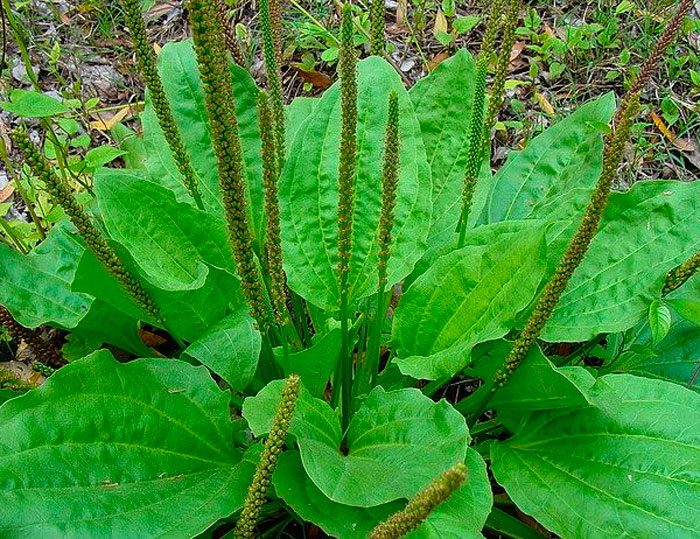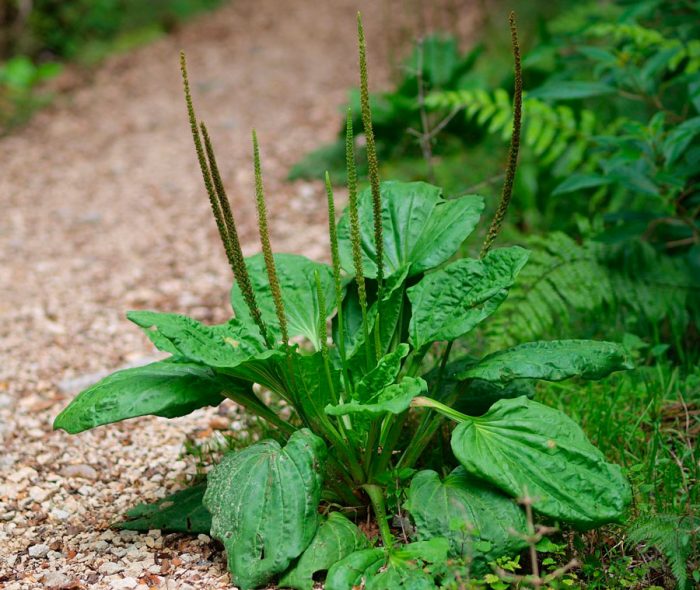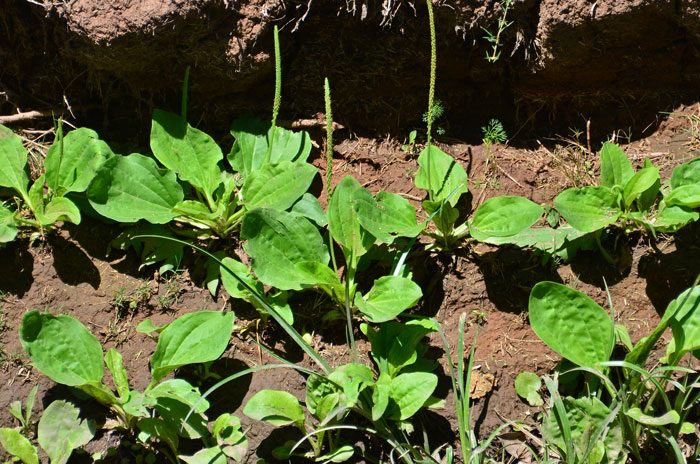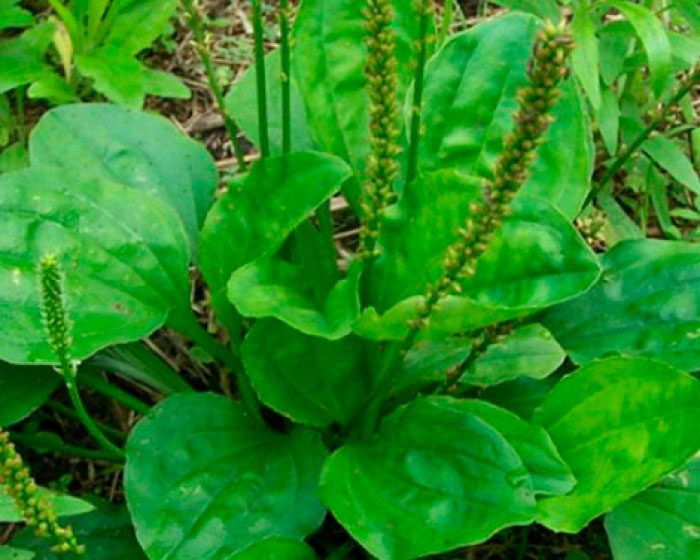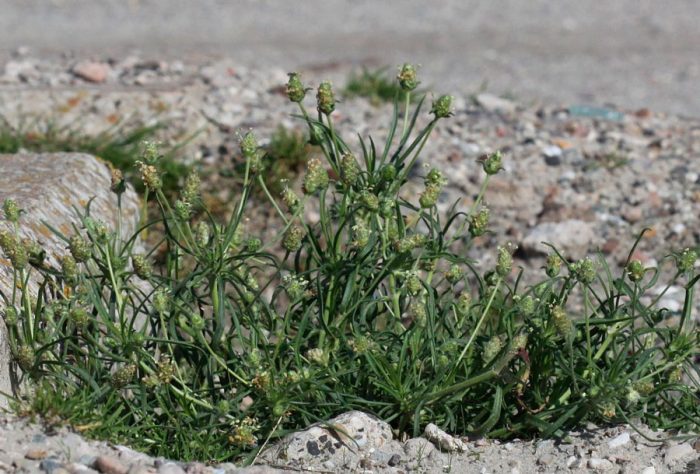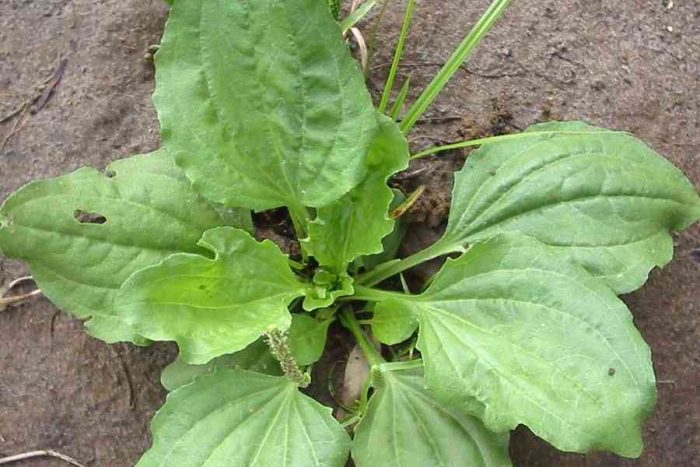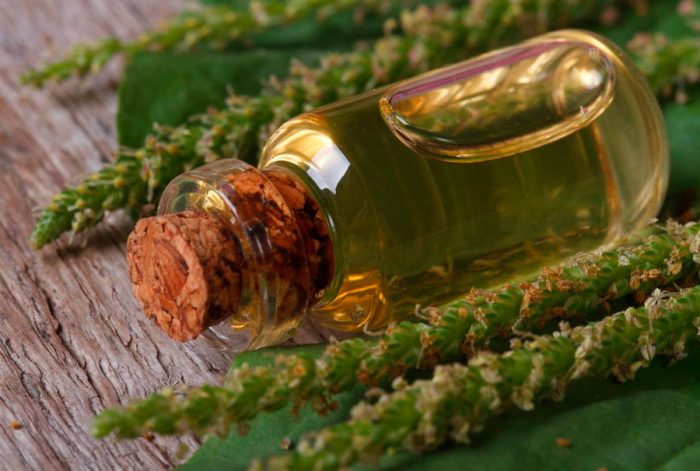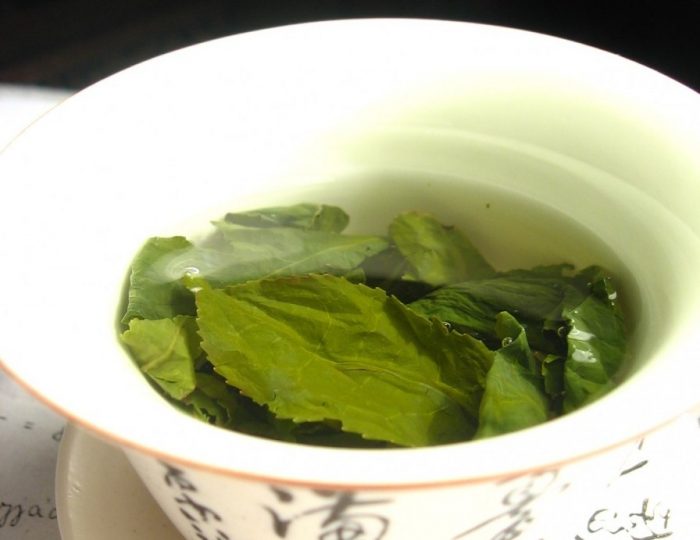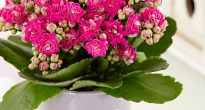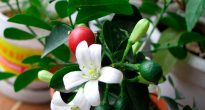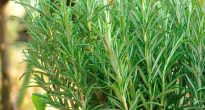Plantain (Plantago) belongs to the plantain family. This genus is represented by dwarf shrubs, as well as perennial and annual herbaceous plants. According to information taken from various sources, this genus unites 150–250 species. Representatives of the genus Plantain in natural conditions can be found in any corner of the planet Earth. Most of the species are weeds. However, among them there are those that have medicinal properties, namely: flea plantain, or flea plantain, as well as larger or large plantain. In nature, this culture prefers to grow on wastelands, in the steppes, along roads, and even in the sands. Some of the plantain species are listed in the Red Book.
Content
Features of the herb plantain
Plantain has a short rhizome, from which cordlike thin roots extend. The root leaf rosette includes petiole leaf plates. As a rule, representatives of this genus have leafless and erect peduncles. However, sometimes there are such species in which leafy and branched peduncles. The dense, end capitate or spike-shaped inflorescence consists of very small flowers that do not represent any decorative value. The fruit of this plant is a multi-seeded capsule. As a rule, wind is involved in the process of pollination of plantain.
Cultivation of plantain
How to plant
Such a species as a large plantain is distinguished by its undemandingness to the composition of the soil. But at the same time, it is not recommended to grow it on heavy or swampy soil. It should be remembered that such a herb is grown in the same place for no more than 2 or 3 years.
Before proceeding with direct seeding, the site should be prepared. To do this, it is dug up, while fertilizers should be applied to the soil, so, for every one square meter of the plot, 30 grams of superphosphate, 4–6 kilograms of compost and 15 grams of potash fertilizer are taken. After the digging of the site is completed, its surface is leveled, and it should also be tamped.
Sowing plantain seeds in open soil is recommended by gardeners before winter. For this, grooves should be prepared, the depth of which should be about 0.5 centimeters, while the distance between them should be from 0.45 to 0.6 meters. After the grooves are ready, plantain seeds need to be distributed in them, which are covered with a not very thick layer of earth. The advantages of podzimny planting are that in cold soil the seed undergoes natural stratification, and with the onset of spring, friendly shoots appear on the site. If it was decided to postpone the sowing of seeds until spring, then they will need stratification. To begin with, the seed is harvested for a couple of days in a place where the air temperature is 18 to 20 degrees. After that, the seeds are placed in a glass jar or a polyethylene bag, which is filled with moistened sand in a ratio of 1: 4. Then the resulting mixture needs to be placed on the refrigerator shelf for storing vegetables for 2 winter months. Systematically, the container with the seed must be taken out of the refrigerator and its contents well shaken. Also, from time to time it is necessary to check the condition of the sand, and if the need arises, then it is moistened.
Sowing of seeds is carried out at the beginning of the spring period immediately after the soil thaws. Before sowing, the soil on the site must be thoroughly loosened to a depth of 30 to 40 millimeters, after which its surface is rolled. When sowing seeds in the ground, they should be buried only 1 centimeter.
Plantain care
It is very easy to care for the plantain grown in the garden. So that this herbaceous plant grows and develops normally, it should ensure timely watering, weeding and loosening of the soil surface between the bushes. Particular attention should be paid to weeding the plantain in the first year of its growth, because at this time the bushes are still relatively weak, and the weed can drown them out much faster. The first time to loosen the surface of the site, and you also need to pull out all the weeds after the first seedlings appear. Plantain crops do not need thinning, even if they are excessively thick.
Such a herbaceous plant needs regular feeding. The first time to feed plantain is necessary at the beginning of the spring period. The second time the bushes are fed after the first collection of leaf plates has been carried out. You can feed plantain with Nitrofoskoy, while the required dosage should be indicated on the packaging of this fertilizer. Also, instead of Nitrofoska, for every one square meter of the plot, you can apply from 15 to 20 grams of any of the nitrogen-containing fertilizers.
Growing a plantain on your site will not be difficult for either an experienced gardener or a beginner. The main thing is to adhere to all the rules of agricultural technology of this culture and take good care of it, and then you will definitely not have problems with this plant.
Collecting plantain
Experts advise to collect medicinal raw materials from plantain bushes only after the rain has passed. However, before harvesting, you should wait until the plants are thoroughly dry. In the first year of plantain growth, the bushes are harvested only 1 time per season. Plants of two or three years of age must be harvested 2 times during the season, with the first harvest being carried out immediately after the plantain begins to bloom, and the second - 6–8 weeks before the onset of the autumn period. The fact is that new leaves must have time to grow on the bushes by the end of the growing season.
Cut off only those sheet plates that reach about 10-12 centimeters in length. To dry the collected raw materials, it should be laid out in a shaded place, it can also be placed in a room that is very well ventilated or ventilated, while the optimum air temperature for drying is 40 to 50 degrees. If desired, the sheet plates can be bundled and hung from the ceiling for drying. When trimming the foliage when collecting medicinal raw materials, it is extremely important not to injure the rhizome, as well as the plantain leaf outlet.When the medicinal raw material dries, it should have a green-brown or green color and have a weak aroma and a bitter taste.
After the lower part of the inflorescences ripens well, the seeds of this plant should be collected, the fact is that they, like leaf plates, have medicinal properties. You need to cut off the inflorescences at the base, after they dry for 3-5 days, they should be threshed.
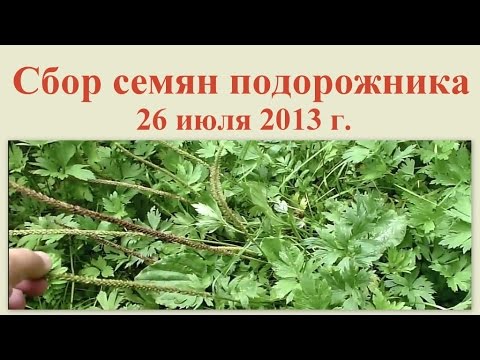

Watch this video on YouTube
Types and varieties of plantain with photos and names
Of the large number of plantain species in culture, only 2 are grown, which provide medicinal raw materials. A detailed description will be given below.
Sandy plantain (lat.Plantago arenaria), or rough, or Indian, or flea, or flea
This plantain species is represented by an annual herb. Branched shoots can reach about 0.4 meters in height. In the upper part, the shoots are glandular-pubescent. Opposite leaf plates in this type are linear and seamless, in length they reach about 70 millimeters. In the upper part, the leaves are serrated. The capitate inflorescences, which are ovoid, consist of small flowers. On the surface of the inflorescences there is also a dense pubescence, consisting of glandular hairs. The fruit of this plant is an ellipsoidal box with seeds inside. Both the herb and the seeds of this plantain species have medicinal properties that are used in alternative medicine.
Large plantain (lat.Plantago major), or larger plantain
This species is a herbaceous plant that is a perennial. Threadlike roots extend from a short rhizome. The basal leaf rosette consists of leaf plates with a wide oval shape and relatively long petioles. The height of the erect peduncle is from 0.15 to 0.45 meters, it bears the final spike-shaped inflorescence, which has a cylindrical shape and consists of small flowers. The fruit of this species is a polyspermous capsule. Fresh grass, as well as its leaf plates, have healing properties in this type of plantain.
Plantain properties: harm and benefit
Medicinal properties of plantain
The fact that plantain has medicinal properties became known to man for a long time. So, it is very widely used in alternative medicine during the treatment of pleurisy, acute respiratory diseases, bronchial asthma, catarrh of the upper respiratory tract, as well as tuberculosis. Preparations based on plantain help relieve inflammation, improve gastric secretion and purify the blood. Also, this medicinal plant is very effective for gastritis, peptic ulcer disease, whooping cough, enteritis, enterocolitis, malaria, hemorrhoids, skin diseases, as well as inflammatory processes in the bladder.
Fresh juice obtained from plantain herb helps to accelerate the regeneration processes in damaged tissues, as well as disinfect wounds and remove pus. It is also known that this herb has a sedative effect, therefore it is used for neuroses, insomnia and increased irritability. Preparations made on the basis of this plant help to normalize blood pressure, and also relieve swelling.
The medicinal properties of this plant are also widely used for gynecological diseases. So, plantain is used to eliminate inflammation of the mucous membrane and muscle membrane of the uterus, and they also stop uterine bleeding and eliminate ovarian dysfunction. Also, this plant is used to normalize potency in men. Plantain also shows very high efficiency in the treatment of nephritis, enuresis and diarrhea.
Plantain is also widely used externally.So, if there are cracks or cuts on the heels, then this plant will contribute to their rather rapid healing. For this, it is recommended to use an infusion made from plantain, it should be mixed with water, which is used for foot baths. If there are scuffs and calluses, then it is recommended to attach fresh leaves of this plant to problem areas at night. The next morning, the damaged skin should be restored.
Plantain is also used for hand skin care. From it at home, you can prepare a fairly effective cream with healing properties. To do this, you need to combine cow oil or honey with plantain infusion. Fresh juice obtained from this plant is perfect for dry skin. Before applying the juice to the skin, it is recommended to dilute it with clean water. From the resulting solution, you can prepare a face mask; for this, the required amount of starch should be added to the mixture of juice and water. The resulting mass must be applied to the skin of the face and kept for a third to half an hour. After that, the face is thoroughly washed with cool running water.
The leaf plates of this plant contain flavonoids, provitamin A, ascorbic acid, vitamin K, enzymes, polysaccharides, uronic acids, tannins, bitterness. And the plantain seeds contain fatty oils, mucus, carbohydrates, amino acids and oleanolic acid.
Who is contraindicated plantain
Despite the fact that plantain is, of course, a useful plant with medicinal properties, it, like all medicinal plants, has a number of contraindications. So, drugs made on the basis of plantain are strictly forbidden to be taken by people whose secretion and acidity of gastric juice is increased. If a person has increased blood clotting, then such drugs can also harm him. They also cannot be used by those who have an individual plantain intolerance. Experts advise, before using plantain for the first time in the treatment of any ailment, be sure to consult with a qualified specialist.
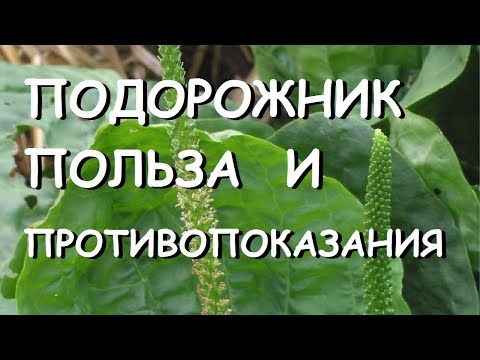

Watch this video on YouTube

